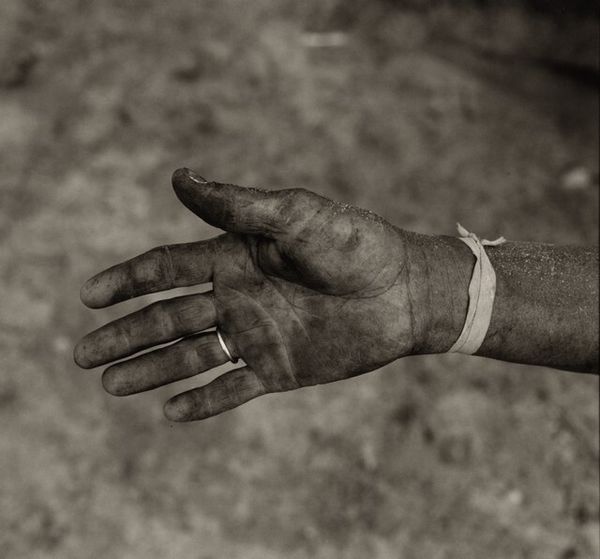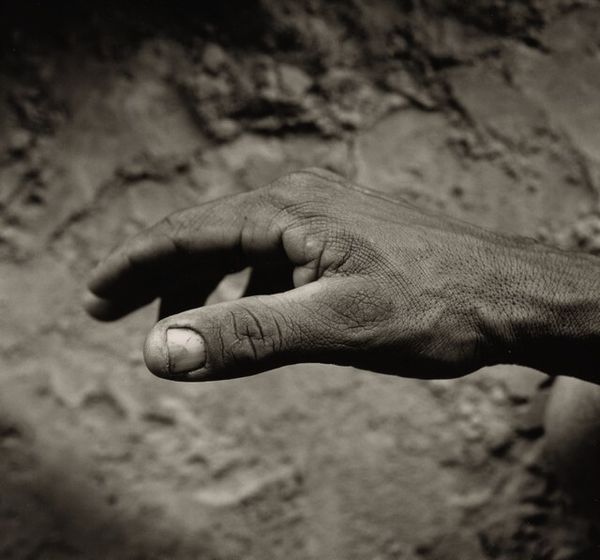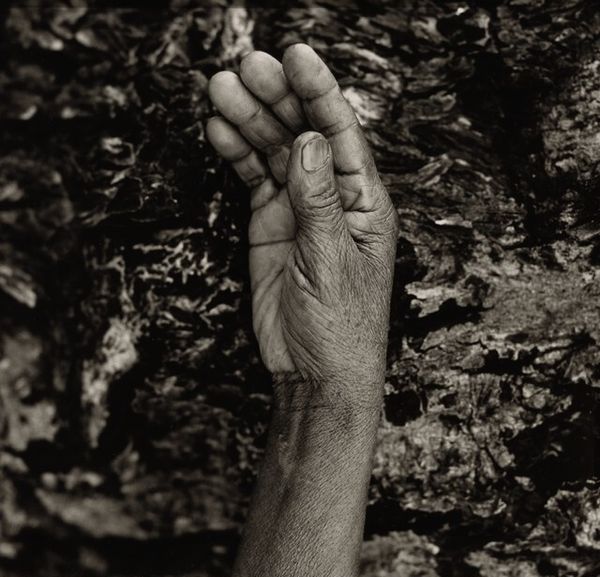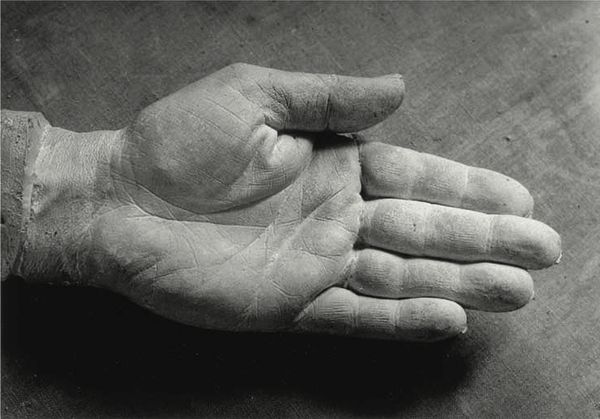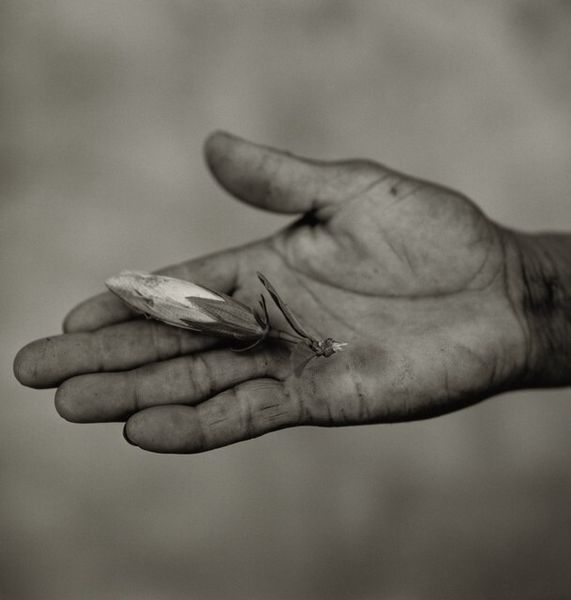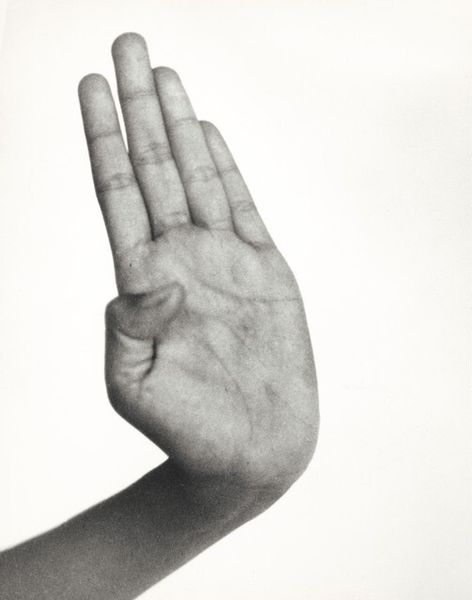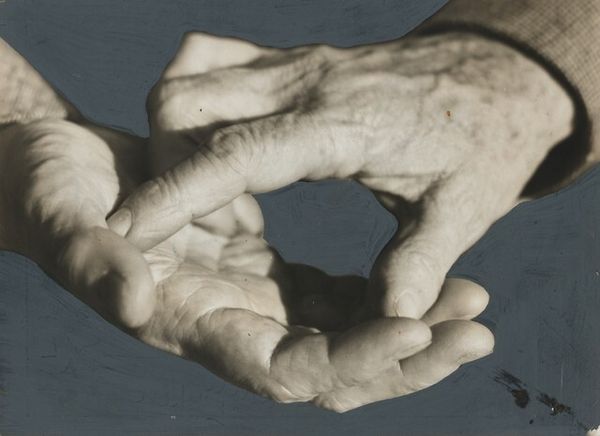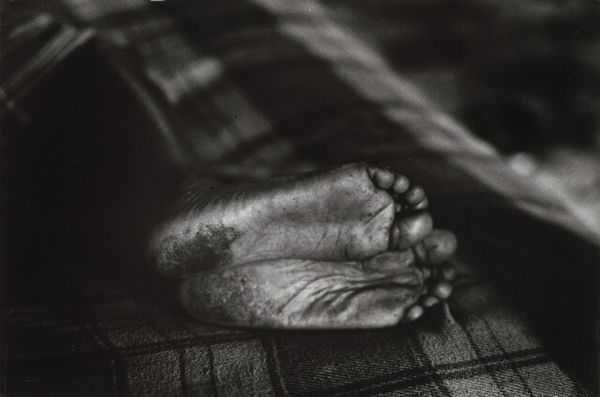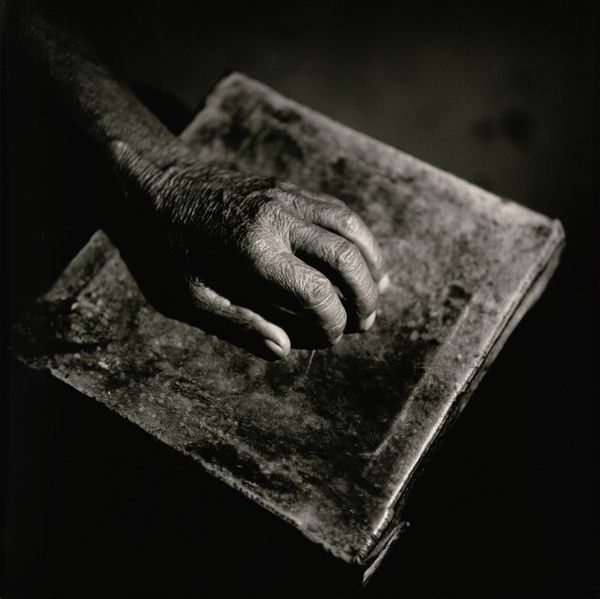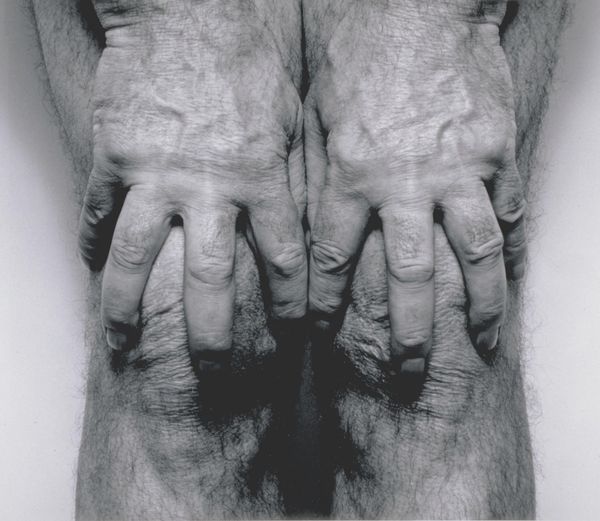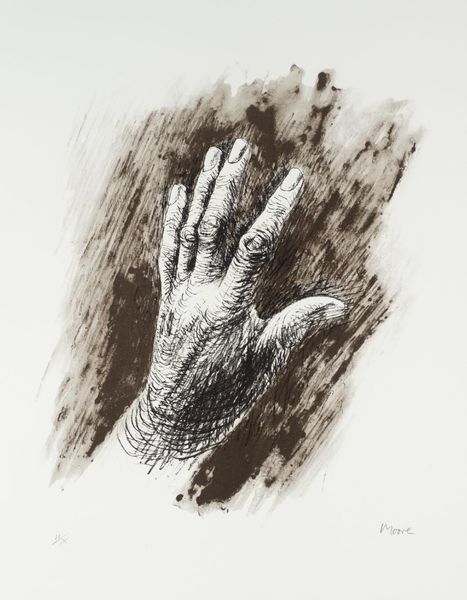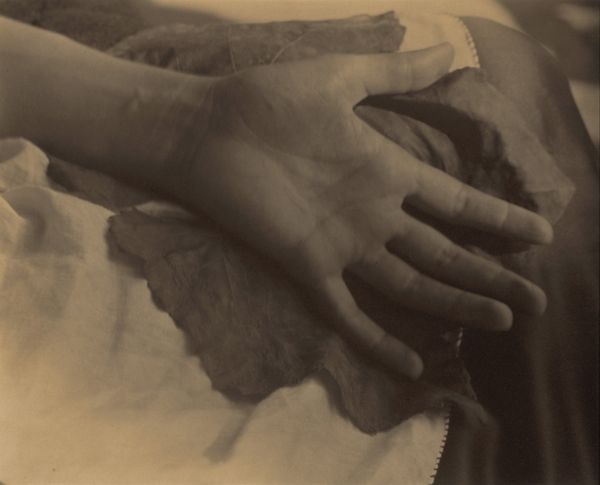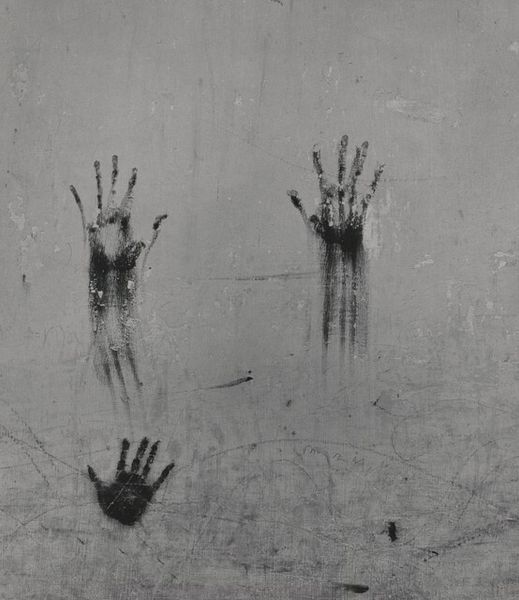
The "Hope" Grasshopper. Dona Antônia's Wish-Ribbon Bracelet. Five Centuries Work the Land at Black River. Possibly 1999 - 2001
0:00
0:00
Dimensions: image: 37.15 x 37.15 cm (14 5/8 x 14 5/8 in.) framed: 38.1 × 38.1 × 3.81 cm (15 × 15 × 1 1/2 in.)
Copyright: National Gallery of Art: CC0 1.0
Curator: Here we have a striking gelatin silver print by Fazal Sheikh, likely made between 1999 and 2001. It’s part of a series and titled “The ‘Hope’ Grasshopper. Dona Antônia’s Wish-Ribbon Bracelet. Five Centuries Work the Land at Black River.” Editor: My immediate impression is of age and labor. The textures are incredible – that dirt ground into the skin… It’s incredibly tactile, despite being a photograph. Curator: Absolutely. Sheikh's work frequently highlights the relationship between people and the land they inhabit, specifically communities dispossessed and impacted by larger social and political forces. Consider the title – a layered phrase alluding to hope, a personal token, and centuries of work tied to the Black River, the Rio Negro. Editor: The raised hand, almost a gesture of supplication, resonates with me. The Black River likely holds complex, interwoven meanings for this community—ancestral, spiritual, economic—revealed in that single open hand. What’s fascinating is how that same gesture could be interpreted differently depending on the cultural context. Curator: The surface of the photograph, the material itself, tells a story of process and human connection. A gelatin silver print lends a certain timelessness, doesn't it? The hand looks as if it’s reaching from a long ago, which resonates with "five centuries work." The print's inherent limitations contribute to the overall mood—monochrome emphasizes form and texture rather than distracting with colour. Editor: Do you see a story about enduring through labor or exploitation being transmitted here, or is there an added layer in this specific pose? I sense a strong connection to Afro-Brazilian religious symbols, specifically the offering of the hand for blessing, connecting material toil with something sacred, enduring. Curator: Precisely. The image beautifully elevates daily toil, making labor both the subject and the subtext of the print. A testament to endurance that exists in and through our corporeal selves. Editor: Seeing that single hand presented in such a monumental way prompts me to think about resilience. Thank you for pointing to how form enhances content; this gives us a greater appreciation of this powerful photograph. Curator: My pleasure. The focus on the making—of the image and the life it depicts—compels us to really consider labour and context in its finest grain.
Comments
No comments
Be the first to comment and join the conversation on the ultimate creative platform.
